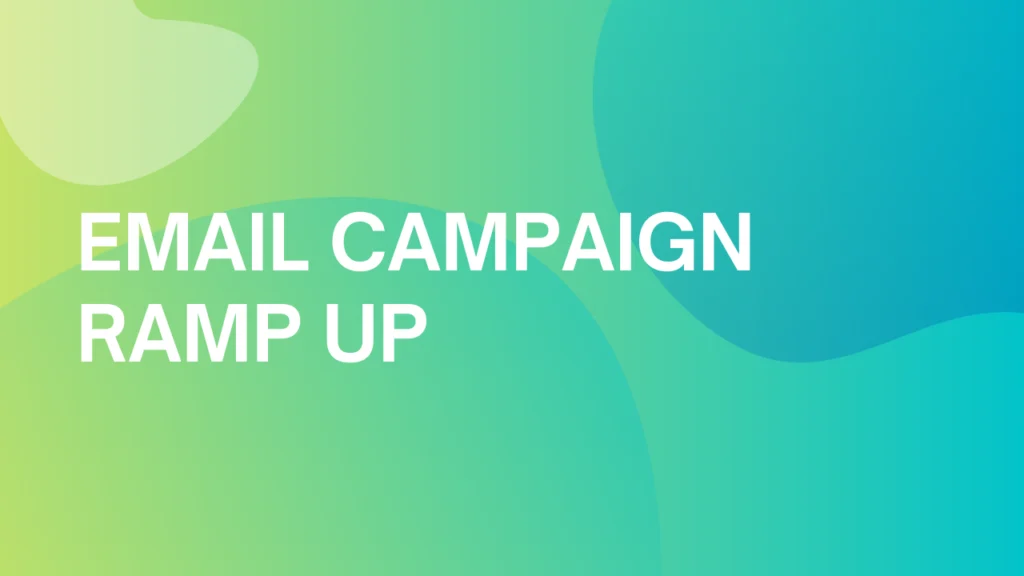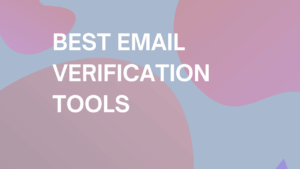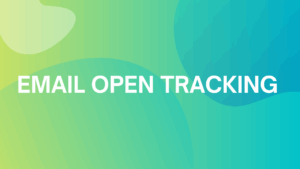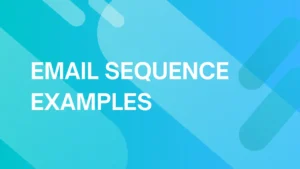
Elevate Your Email Strategy: The Beginner’s Guide for a Successful Email Campaign
Navigating the digital highway of email marketing in today’s interconnected world requires more than just having a solid message to share.
With over 347 billion emails being sent every single day, there’s stiff competition to get noticed. To stand out, your email needs to be more than just another blip on the recipient’s radar.
Unsure if you actually need an email campaign in your business? Let’s talk numbers:
- For every dollar invested in email marketing, there’s a potential to achieve a remarkable ROI of $36.
- In the year 2022, successful email marketing campaigns enjoyed a CTR (Click Through Rate) of 15.22%.
- Open rates vary, but in 2023 open rates average around 18%.
So where do you begin, and how can you go from sending 0 emails a day to having a full-fledged email empire?
Email marketing isn’t just surviving – it’s thriving.
With the digital diaspora spread across the world, connecting and engaging with customers via email marketing has never been more relevant.
Like a lighthouse in the stormy seas of a changing world, understanding and wielding the power of email marketing has become a foundational pillar for businesses.
Let’s take a deep dive and turn your email campaign dreams into reality.
What Is an Email Campaign?
An email campaign is an email or series of emails that target specific recipients in order to achieve a goal, be it greater engagement, higher conversions, or increased loyalty.
Stepping aboard the ship of email campaign creation, you need a well-planned map to reach your treasure.
Follow these steps to start your campaign from scratch and get the wind in your sails.
a) Understand Your Target Audience
Like a skilled ship’s captain understanding the tides, you must comprehend the intricate nuances of your audience.
Dive beneath the surface to reveal your subscribers’ age, location, interests, and needs.
Your campaign will only resonate if the content mirrors your audience’s desires.
- Demographics: Collect basic details such as age, gender, location, education, and income.
- Psychographics: Understand their interests, attitudes, behaviors, and values.
- Pain points: Identify the problems your product or service can solve.
- Purchase behavior: Analyze their past purchases and buying frequency.
- Customer feedback: Use surveys, reviews, and social media to gather insights.
- Competitive analysis: Study your competitors’ audience and strategy.
- Online behavior: Examine their online activities, like websites visited and social media use.
- Use customer personas: Create personas to represent your ideal customers.
Once you’ve got a clear view of your target audience, it’s time to start making some goals.
b) Setting Clear Goals
Are you looking to increase website traffic, boost sales, or greater brand awareness?
Knowing your true aim will steer you in the right direction, rather than leaving you rudderless and lost in a sea of possibilities.
| You should be setting SMART goals, ones that are Specific, Measurable, Attainable, Relevant, and Time-bound. |
Besides keeping your goals SMART, here are some common Key Performance Indicators (KPIs) you can use to set attainable goals.
- Email delivery rate: the percentage of emails that reach the recipients’ inboxes.
- Click-through rate (CTR): the percentage of recipients who click on a link in the email.
- Unsubscribe rate: the percentage of recipients who opt out of receiving future emails.
- Spam complaint rate: the percentage of recipients who mark the email as spam.
- Forwarding rate: the percentage of recipients who forward the email to others.
- Email bounce rate: the percentage of emails that are rejected by the recipient’s servers.
- Email marketing conversion rate: the percentage of recipients who take a desired action after clicking on a link in the email.
Now that you’re equipped with the knowledge of who you’re talking to, a set of benchmarks to work towards, and ways to keep track of your journey, it’s time to build your email list!
c) Build Your Email List
Start collecting email addresses from people who are interested in your product or service.
Note that it’s important to obtain explicit consent from people before adding them to your email list.
Try some of the following ways to start collecting your loyal crew!
- Opt-in forms: Include sign-up forms on your website to allow visitors to subscribe easily.
- Quality content: Offer valuable, relevant content that encourages readers to subscribe.
- Social media promotion: Promote your email newsletter on your social media platforms.
- Lead magnets: Offer incentives like ebooks, webinars, or discounts to encourage sign-ups.
- Events and webinars: Collect email addresses during special events you hold.
- Partnerships and collaborations: Collaborate with complementary brands to reach a wider audience.
- Customer referrals: Encourage existing subscribers to refer friends or colleagues in exchange for rewards. Be sure to keep reading to learn more about this valuable tactic!
| While you’re building up your email list, you should also start warming up your inbox. Using Warmup Inbox will increase your IP reputation and keep your emails out of the Bermuda Triangle of the spam folder! Try it for free today! |
d) Choose an Email Marketing Platform
Sending all these emails yourself is no easy task. Select an email marketing platform that fits your needs and makes sending out this mass of emails easier.
The right platform should offer key features like email templates, automation, analytics, and list management tools.
Here are a few of the most popular tools that can get you started:
e) Crafting the Perfect Message
The content of your email is your campaign’s sails, catching the wind of your audience’s attention and propelling engagement.
Craft compelling messages, each with a clear and actionable call to action that acts as an irresistible siren’s song.
Using the following guidelines will help you find your voice:
- Subject line: Create catchy, concise subject lines to encourage opens.
- Personalization: Use your recipient’s name or other personal details to make your message more engaging.
- Value proposition: Clearly state the value or benefits your readers will gain from your email.
- Call to Action (CTA): Every email should include a clear and concise CTA guiding readers on what to do next.
- Simple and direct language: Use clear and easy-to-understand language.
- Storytelling: Engage your readers by telling a story or connecting your message to a relevant topic.
- Relevance: Make sure your content is relevant and valuable to your audience.
- Visual content: Utilize visuals like infographics to make your content more engaging and easier to digest.
- Consistency: Maintain a consistent tone and style across your emails to build your brand voice.
f) Designing an Appealing Email Layout
An appealing email layout is like the hull of your ship, offering a smooth and stable journey for your readers.
A responsive design adapts to different devices ensuring a pleasant voyage, whether your subscribers are navigating on a computer, tablet, or smartphone.
- Responsive design: Your emails should look good and be easily readable on all devices, from desktops to smartphones.
- White space: Use white space effectively to improve readability and focus on key elements.
- Visual hierarchy: Use size, color, and positioning to guide readers’ eyes to the most important content.
- Consistent branding: Reflect your brand’s colors, fonts, and overall style.
- CTA visibility: Make your CTA buttons or links stand out.
- Easy navigation: Structure your email so readers can easily skim and find information.
- Optimize for load time: Keep image sizes small for quick and easy loading.
- Test across platforms: Always test your email layout on various devices and email clients to ensure it displays correctly.
- Accessibility: Design your emails with accessibility in mind, including alt text for images for those using screen readers.
After you’ve turned your old dinghy into a sleek luxury yacht, filled with relevant and easy-to-find information, it’s time for proofreading and testing.
g) Test and Optimize Your Emails
Before sending your emails, it’s crucial to test them. This includes checking for any errors, optimizing for mobile viewing, and A/B testing different elements to see which works best:
- Spelling and grammar: Always proofread your emails to avoid any mistakes.
- Mobile optimization: Check that your emails display properly on different devices, especially on mobile.
- A/B testing: Test different subject lines, designs, and content to see what resonates most with your audience.
- CTA: Experiment with different CTA styles, placements, and wording to maximize clicks.
- Send time: Test different send times to identify when your audience is most likely to engage. See below for more details on the perfect time to send your email!
- Links: Make sure all your links work properly and direct to the correct locations.
- Personalization: Test different levels of personalization to see what your audience responds to best.
- Images and media: Check how images and other media appear in different email clients and devices.
- Delivery rates: Monitor delivery rates to make sure your emails aren’t ending up in the spam folder. If they are, adjust your content accordingly.
Also, if you want to make your email more visually appealing, using a profile picture generator can help you create professional-looking avatars or images for a personalized touch.
You’ve dotted the i’s and crossed the t’s. Let’s get sending!
h) Send Your Emails
Once you’re satisfied with your email, you can send it out.
Depending on your audience and goals, you may want to consider the best time to send your emails for maximum open rates.
What might be the best times to send emails, you ask?
- Morning: The average open rate tends to increase between 9-10 AM, reaching around 21.35%.
- Noon: Peak open rates occur between 1-2 pm, with an average rate of 22.09%.
- Afternoon: Open rates rise again between 5-6 pm, averaging at 20.74%.
- Best day of the week: Tuesday is highly recommended for sending emails, with experts suggesting the 10-11 AM window.
- Alternative best day: According to several studies, Thursday is another top choice for sending emails.
- Best global send time: For the highest open rate, consider sending emails at 4 AM. For the best click-through rate, 6 AM is a popular choice.
There you go! You’ve just started the wheels turning on what is sure to be a fruitful endeavor.
Ramping Up Your Email Campaign
Like a ship leaving the safe harbor, your email campaign too reaches a stage where it yearns to sail the open seas and explore broader horizons.
This stage is known as ‘ramping up’ your email campaign.
With these tools at your disposal, you’ll be poised to steer your campaign toward success, making each maneuver count as you sail through the vast ocean of email marketing.
1. Advanced Segmentation
Like a skilled cartographer dividing a map into regions, segment your email list to deliver targeted messages to specific subscriber groups.
Personalizing your emails based on these segments is akin to customizing a journey for every reader, offering a unique experience that significantly improves engagement and conversions.
Here are some ways you can segment your email list:
- Behavioral segmentation: Divide your list based on how subscribers interact with your emails. This could be based on open rates, click-through rates, or the types of links they click on.
- Purchase history: Segment subscribers according to their past purchases. This can help you to send targeted offers that are more likely to appeal to them.
- Website activity: Use your website analytics to segment subscribers based on the pages they visit most often, the content they interact with, or the products/services they view.
- Demographics: Take into account factors such as age, location, gender, profession, etc. This can help you tailor your message to suit each segment’s needs and preferences.
- Engagement level: Categorize subscribers by their level of engagement. For instance, those who consistently open your emails and click through could be in an ‘Engaged’ segment.
- Survey responses: If you conduct surveys or polls, use the responses to further segment your list.
- Lifecycle stage: Segment subscribers based on where they are in their customer journey. For example, new subscribers, active customers, lapsed customers, etc.
2. Testing & Optimization
That’s right, more testing is ahead.
Set sail on different routes using different ways of testing, discovering the areas where your audience responds best.
These data-driven insights help you refine your email campaigns.
There are some additional areas to test when ramping up your email campaign:
- Email content testing: Experiment with different types of content to determine what your audience engages with most. This could include variations in text, imagery, interactive elements, or tone of voice.
- Send time optimization: Determine the best times to send your emails for maximum engagement. This can vary depending on your audience’s location, work schedule, and other factors.
- Landing page testing: If your email includes a link to a landing page, try different designs, messaging, and layouts to optimize for conversions.
- Frequency testing: Determine the optimal frequency of emails that strikes a balance between staying top-of-mind and avoiding email fatigue.
Playing with these factors will yield varying results, which you can use to further strengthen your overall strategy and define future goals.
3. Advanced Personalization
Personalization is about more than just addressing passengers by name. Tailor the journey based on their past purchases location or interests.
Such advanced and real-time personalization can make each reader feel uniquely catered to.
Some other ways to use advanced personalization include:
- Event triggers: Send personalized emails based on specific actions the subscriber has taken, such as signing up for a newsletter, making a purchase, or abandoning a shopping cart.
- Predictive personalization: Use data to predict what a subscriber might be interested in, and customize your emails accordingly.
- Customer journey mapping: Personalize emails based on the stage of the customer journey. New subscribers may get a welcome email while regular customers might receive loyalty rewards or referral incentives.
- Interactive content: Make your emails more engaging by including interactive elements such as quizzes, surveys, or sliders that adapt based on the user’s input.
Adding some extra touches can really go the extra mile to make your readers feel special!
4. Re-engagement Campaigns
There will be times when certain readers will be distant or unresponsive. For these instances, consider launching a re-engagement campaign.
- Spot the disengaged readers: Start by identifying the subscribers who have been unresponsive. They’ve stopped opening your emails or clicking on links, or ignoring your calls to action.
- Craft a personalized message: Draft a message that feels personal and genuine. Let them know they’ve been missed on deck. Most people appreciate a heartfelt “we miss you”!
- Offer incentives: It could be a discount, early access to a new product, or a special gift. This might just be the lure they need to get them back on board, interacting with your content.
- Give them the option: Ask them outright if they wish to continue receiving emails. It’s possible they’ve lost interest, and if so, it’s better to part ways amicably. This way, you keep your list clean and engaged, reducing the risk of being marked as spam.
- Monitor the results: Keep a close eye on the performance of your re-engagement campaign. See who responds and who doesn’t, and learn from the experience.
Keep in mind that after unsuccessful re-engagement attempts that garner no response, it’s best to remove those silent users from your list.
5. Referral Programs
On the other hand, you can further engage your active members with referral programs.
Entice them with rewards or exclusive content, making each referral a win-win for all parties involved.
Have a look at these other referral program examples that can help boost your email subscribers:
- Dual-sided rewards: In this strategy, both the referrer and the referred get rewards. For example, if a subscriber signs up for the referral program and enters their friend’s email, both of them get a discount or other promotion once the friend confirms/consents to receiving more emails.
- Tiered rewards: The more people a subscriber refers to, the better their reward. This strategy encourages subscribers to refer more than just one or two friends. For instance, a company may offer a 10% discount for one referral, a 20% discount for three referrals, and so on.
- Exclusive perks: Offer something that money can’t buy, like early access to new products or content, VIP customer service, or even a chance to visit your company headquarters.
- Charitable contributions: For each referral, you make a donation to a charity. This can boost your brand’s reputation and pique the attention of customers who care about social issues.
- Social media contests: Encourage subscribers to share a specific message or hashtag on social media for a chance to win a prize. This can greatly increase your reach and attract new subscribers.
- Discount codes: Provide a unique discount code to each subscriber to share with their friends. This makes tracking referrals easy and gives the referred friend a clear incentive to make a purchase.
| Note: Not all of these options directly involve utilizing your email campaign, but they can certainly lead to more brand awareness and consequently, more active subscribers. |
6. Retargeting Campaigns
Retargeting campaigns aim to follow up with users who have shown interest in certain products or services, offering them another chance to partake.
Take a look at these examples you can use in the future when your campaign is well underway.
- Cart abandonment campaigns: These emails are triggered when a customer adds items to their online shopping cart but doesn’t complete the purchase. The follow-up email could showcase the items left in the cart, and offer a discount or free shipping to encourage the purchase.
- Product page visits: For visitors who browse specific product pages but don’t make a purchase, you can send an email highlighting the benefits of the product, offering a demo, or sharing customer testimonials.
- Repeat purchase reminders: If you sell products that have a regular usage cycle (like skincare products or supplements), you can retarget customers who should be about to run out, giving them a little nudge to re-purchase.
- Post-purchase upsell: After a customer makes a purchase, retarget them with an email showcasing complementary products they might be interested in. Buying dog food? Your furry friend might want some new toys as well!
- Event retargeting: If a subscriber signs up for a webinar or other online event but doesn’t attend, you can retarget them with an email offering them a chance to watch the replay.
- Membership renewal reminders: If you run a subscription service or membership site, you can retarget members who are nearing the end of their subscription with an email reminding them to renew.
- Service reminder: For companies that offer services, a retargeting email could remind customers to book their next appointment or service. This could be particularly useful for businesses such as car servicing, dentists, hair salons, etc.
- VIP campaigns: Reward your most loyal customers with a retargeting campaign that offers them exclusive deals or early access to new products. This not only encourages further engagement but also builds customer loyalty.
Warm Your Inbox & Clean Your Email List
Going from 0 to 100 might work with great cars, but it doesn’t work with email campaigns.
Before you start ramping up your email campaign, you’ll need to build your email reputation.
Warmup Inbox helps your emails find their way to the inbox and not get lost in the whirlpool of spam filters.
It works by sending emails from your address to other addresses on the Warmup Inbox network and then interacting with those emails (opens, replies, etc.), mimicking real user behavior.
Over time, this activity boosts your sender reputation and improves your email deliverability.
Here’s what makes Warmup Inbox indispensable to your email campaign:
- Enhanced deliverability: It helps improve your sender reputation, which is crucial for making sure your emails land in the inbox and not the spam folder.
- Automated process: Warmup Inbox automates the process of warming up your email account, saving you time and effort.
- Protection against blacklisting: By gradually increasing email volume and maintaining positive engagement, it safeguards you from being blacklisted by ISPs.
- Gradual warming: Warmup Inbox applies a gradual warming-up schedule, slowly increasing the volume of sent emails. This slow pace mimics natural behavior and prevents sudden spikes in your email activity, which can trigger spam filters.
- Interactions: The service doesn’t just send emails; it also interacts with them. This back-and-forth communication between your account and other accounts in the network helps establish your email account as active and engaged, further improving your sender reputation.
- Compatibility: Warmup Inbox can work with a wide range of email providers, offering flexibility and convenience. Whether you’re using Gmail, Outlook, or a custom domain, Warmup Inbox can help you warm it up.
- Support and reporting: Warmup Inbox provides excellent customer support and transparent reporting. You can easily track your progress and see how your sender reputation is improving over time.
| Try Warmup Inbox for free to start making your inbox toasty and ready to send! |
Not only should you have a warm inbox and a good sender reputation, but you also need to keep a clean email list.
That’s where EmailListVerify can help.
It keeps your email list solid and sea-worthy by weeding out all the invalid and risky addresses that might sink your ship.
With a variety of features like email deduplication, domain validation, and spam-trap removal, EmailListVerify guarantees a clean, reliable email list that significantly improves your deliverability and engagement rates.
Here are some key benefits of using EmailListVerify:
- Improved deliverability: It helps clean your email list, ensuring your emails are sent to valid and active addresses.
- Reduces bounce rates: By eliminating invalid email addresses, it decreases your email bounce rate, improving your sender reputation.
- Prevents spam complaints: EmailListVerify helps avoid spam traps and complainers, shielding you from potential penalties.
- Integrations: EmailListVerify can be integrated with various email marketing platforms for seamless list management.
- Cost-effective: Keeping your email list clean with EmailListVerify saves money in the long run by preventing you from wasting resources on undeliverable emails.
| When you sign up with EmailListVerify you can verify 100 emails for FREE! |
Final Thoughts
Just as the seasoned sailor knows the sea’s ever-changing nature, savvy marketers must navigate the ebb and flow of email marketing strategies.
In a world that is increasingly digital, email remains a steadfast, reliable tool for connecting businesses with their audiences.
With every word we write, every campaign we launch, and every trend we embrace, we set sail on an exciting journey – one that brings us closer to our destination of growth, engagement, and success.
Just as a successful voyage depends on a competent crew, the right tools, and a well-planned route, an effective email campaign is built upon the pillars of understanding your target audience, setting clear goals, building and nurturing an engaged email list, crafting compelling messages and campaigns, and regular testing and optimization.
As you embark on your email marketing adventures, remember these tried-and-true aids and strategies.
| Tip: If you are preparing a wide-scale email campaign, you can book a 30-minute free consultation. |



